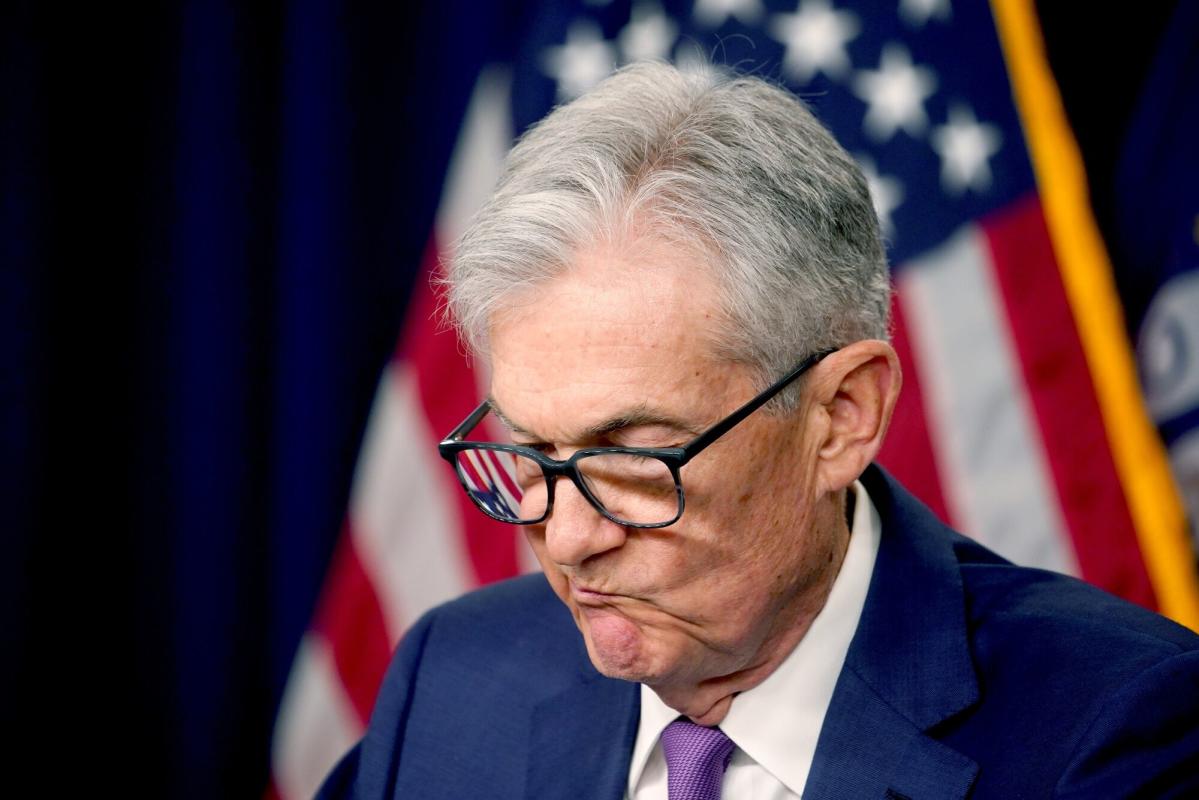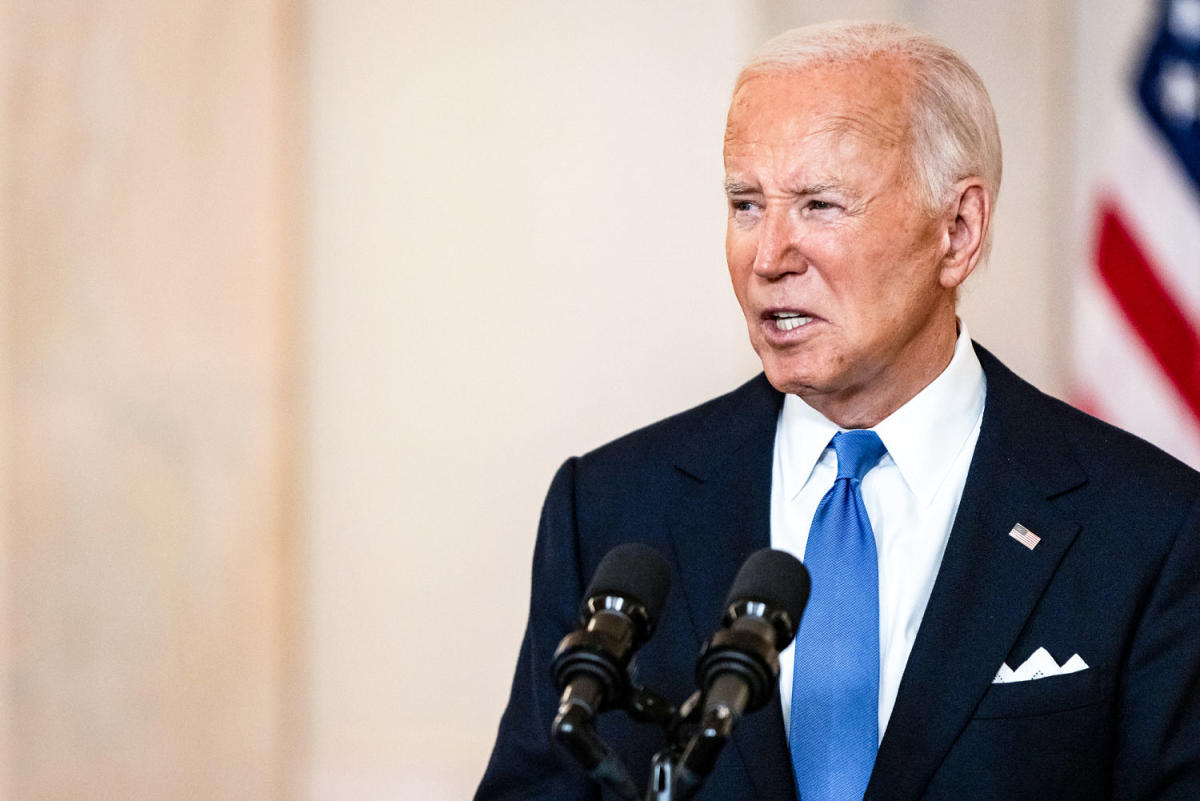(Bloomberg) — Investors can learn more about the Federal Reserve’s determination to ease monetary policy when U.S. policymakers update their interest rate forecasts for the first time in three months on Wednesday.
Most read from Bloomberg
The central bank – led by Chairman Jerome Powell – is widely expected to keep borrowing costs steady for the seventh consecutive year, but officials’ interest rate forecasts are less certain.
A majority of 41% of economists expect the Fed to signal two cuts in the closely watched dot plot, while an equal number expect the forecasts to show only one cut or no cuts at all, according to the median estimate in a Bloomberg survey.
After raising the fed funds rate by more than five percentage points starting in March 2022, the Federal Open Market Committee has kept borrowing costs at the highest level in two decades since July.
Many Fed leaders have suggested in recent weeks that they see no rush to cut rates as inflation becomes more persistent and growth prospects remain solid.
What Bloomberg Economics says:
“The June FOMC meeting will be one of the most crucial this year, as Powell may provide the clearest hint yet on the timetable for rate cuts. The new dot chart will likely indicate two 25 basis point cuts this year, compared to three in the March version.
With growth indicators continuing to surprise on the negative side since the April 30 and May 1 meeting – even as inflation data meets expectations – we expect Powell to sound relatively dovish at his press conference.”
–Anna Wong, chief US economist For a full analysis, click here
Inflation according to the Fed’s preferred measure was 2.7% in the year ended April, compared with the central bank’s target of 2%. Data released Friday showed a rise in labor costs last month, as well as rising wages, prompting traders to dial back expectations of interest rate cuts this year.
“The Fed will choose to keep interest rates stable for longer,” said Thomas Simons, senior U.S. economist at Jefferies. “They will want to see another set of more favorable numbers, in line with an inflation trend closer to 2%, before they feel comfortable cutting rates.”
In Canada, fresh off becoming the first central banker in the Group of Seven to enter an easing cycle, Bank of Canada Governor Tiff Macklem will speak at a conference in Montreal.
Elsewhere, a decision by the Bank of Japan that could scale back bond purchases, inflation data from China to Sweden and crucial UK payroll figures will be among the highlights of the week.
Click here for what happened last week and below is our summary of what will happen in the global economy.
Asia
The BOJ will be in the spotlight on Friday when the board concludes a two-day meeting with a policy decision.
While the bank is expected to keep its short-term interest rates steady, people familiar with the matter have said officials could discuss whether to reduce bond purchases.
That’s a move that could support the yen if Japanese long-term yields rise, narrowing the yield gap with U.S. government bonds.
The BOJ is meeting after the government released revised first-quarter growth data on Monday, likely to confirm the economy shrank for the second time in three quarters.
Elsewhere, the State Bank of Pakistan is seen cutting its benchmark interest rate by a full percentage point on Monday after consumer inflation slowed significantly in May. Central banks in Thailand and Taiwan are also meeting this week.
Data shows China’s consumer inflation is expected to accelerate slightly to 0.4% annualized in May, while factory deflation could slow to 1.5%, the smallest price decline since February 2023.
India gets price statistics in addition to industrial production, while Malaysia publishes sales value and industrial production for April.
Trade figures come from the Philippines and India, with Australia releasing NAB business conditions and confidence figures on Tuesday, followed by a batch of employment data on Thursday.
Europe, Middle East, Africa
Britain will offer some data highlights in the coming week. On Tuesday, labor market data may show a pick-up in wage growth in the three months to April, with economists expecting an annual increase of 6.1%. Such an outcome is likely to strengthen the case for the Bank of England to avoid a rate cut this month.
In figures on Wednesday, gross domestic product probably failed to rise in April for the first time this year, with both manufacturing and services expected to have fallen in the month that signaled a poor start to the second quarter.
With the British election campaign in full swing, BOE officials will observe a self-imposed quiet period in the coming days.
In the euro zone, industrial production data is expected to show the smallest increase in three months on Monday, suggesting the region has also started the second quarter on a weak footing.
In the wake of their rate cuts last week, European Central Bank officials will include governors of Germany and France, chief economist Philip Lane, Vice President Luis de Guindos and ECB President Christine Lagarde.
Investors will also keep an eye on the European Parliament elections, the results of which are expected to be published late on Sunday.
What Bloomberg Economics says…
“In the next parliament, the EU will have to take action to close the productivity gap that has opened up with the US economy. Failure to do so would jeopardize its position as a major global player. A balance must be struck between fiscal sustainability and investments for a greener, more prosperous future. And it will have to decide where it stands on trade policy and defense at a moment of extreme geopolitical uncertainty.”
—Jamie Rush and Simona Delle Chiaie. Read the full research here
Looking south, Saudi Arabian GDP data will provide an updated picture on Sunday following an initial estimate that the kingdom’s economy shrank 1.8% in the first three months of the year, its third consecutive quarterly contraction.
The non-oil economy – a priority for the government – grew at an annual rate of 2.8% in the first quarter, also declining from higher levels seen in previous quarters.
On Thursday, Kenyan Finance Minister Njuguna Ndung’u will announce the East African country’s budget for the year to June 2025. He is expected to set out plans for the country at high risk of debt problems to achieve its lowest budget deficit in 15 years by reining in spending. , loan cuts and aggressive tax measures.
Meanwhile, across the wider region, several consumer price reports for May will be published:
-
Norwegian inflation is expected to slow on Monday, but still remains above 3%.
-
Investors will be keeping a close eye on whether there will be an easing in Ghana’s data on Wednesday. The price metric has been persistent, averaging 24% so far this year.
-
Meanwhile, economists expect Israeli inflation to rise to 3.2% on Friday, up from 2.8% a month earlier.
-
On the same day, Russian data could show that consumer price growth has crossed the 8% mark, double the central bank’s target, as price pressures continue to rise in an economy overheated by President Vladimir’s war Putin in Ukraine.
-
Sweden will then release figures. The annual consumer price measure, tracked by the Riksbank, is expected to weaken by almost 2%.
Latin America
In Brazil, the central bank’s analyst survey published on Monday could show further erosion in inflation expectations for 2024-2026, as well as May.
Notably, analysts last week raised their estimate for the 2024 policy rate by a quarter of a percentage point to 10.25% – up from 9% in April – reinforcing speculation that the bank will maintain a rate of 10.5% this month.
May consumer prices released on Tuesday are likely to show the first acceleration in eight months from April’s 3.69%. On Thursday, Brazil’s statistics agency will publish April retail sales data.
In Colombia, early consensus expects inflation to rise slightly in May, the first increase in fourteen months. Also on the program are April reports on industrial production, manufacturing and retail sales.
Monthly inflation in Argentina is likely to have slowed for a fifth month in May, compared to 8.8% in April. Analysts polled by the central bank see an increase of 5.2%, implying an annual interest rate of 279.6%, down from 289.4% in April.
In Peru, one of the world’s longest-serving central bankers has finally brought inflation back to target: Julio Velarde, who led the bank for almost eighteen years, goes into Thursday’s interest rate meeting with consumer prices back at the 2% target. Look for a quarter-point cut to 5.5%.
–With help from Tony Halpin, Robert Jameson, Laura Dhillon Kane, Brian Fowler, Piotr Skolimowski, Monique Vanek, David Herbling, and Abeer Abu Omar.
Most read from Bloomberg Businessweek
©2024 BloombergLP







